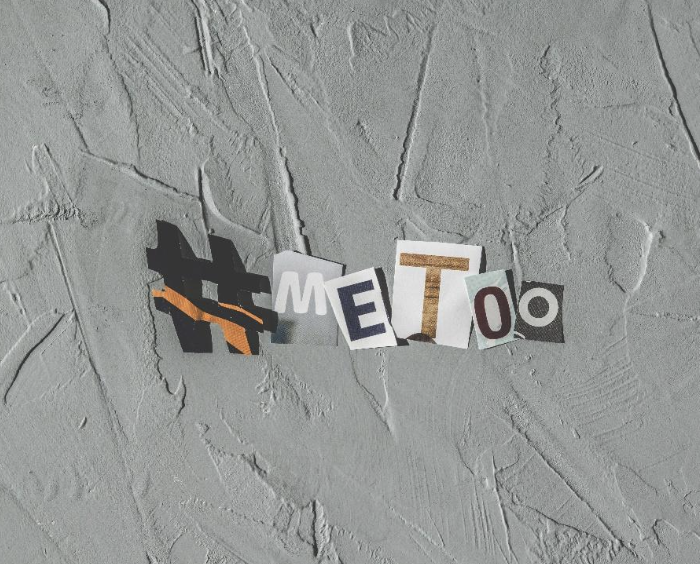Turkey, 10/11/2022
DIGITAL ACTIVISM AND DIGITAL FEMINISM
With globalization and developments in communication technologies, people’s living spaces and living habits have changed. In this regard, access to technology has started to play a critical role in reaching new life processes. The lack of access to the digital world and the Internet directly affected social movements and digital activism.

Societies that have access to the Internet are much more successful in social activities and distributing social messages. According to Tilly, Digital Activists living in rich countries have fewer problems and are more successful in organizing and building action than activists living in undeveloped countries. Therefore, for social movements to be successful, it is imperative to increase people’s digital opportunities and develop egalitarian policies in this area all over the world.
In the past decade, social media has started to play a vital role in social movements. Social media has transformed from a medium where people communicate with each other to one where people produce information and news. From the Arab Spring (2010) to Occupy Wall Street (2011), even to the Brazilian fare and World Cup protests (2013), the rapid and viral spread of images with wireless internet, along with the space of ideas and movements all over the world, and digital-oriented actions, it has become a significant force for societies and governments. This power has led to a reinterpretation of the concept of activism. In its most general sense, Activism can be defined as «all efforts to support or oppose social transformation.» From the definition of Activism, digital Activism can also be described as «any example of activism using the digital platform.» (Sivitanides 2011: 2). In traditional social movements, there is an administrative structure that manages the social activity, and it is responsible for the organization, even if it does not exist at first, it is formed in a short time. In digital Activism, on the other hand, activists can do movements under a specific leadership or dispersedly. Brafman and Beckstrom use the spider-starfish metaphor to describe new communication methods.
According to this metaphor, the spider is a centrally managed animal. In other words, a brain controls the body, and arms and legs are connected to this brain. If the animal’s head is cut off, it dies. On the other hand, the sea star is not a body with a central structure. You will get two living starfish if you cut a starfish from the middle. Like in this metaphor, social movements based on traditional communication are like spiders. When the center and organizational structure collapse, the activity ends. Digital activist movements based on new communication possibilities, on the other hand, can survive without a clear organizational structure like the starfish. Accounts that stand out without a clear leader, blogs that make referrals, and hacker groups can take on or share the leadership mission. Due to its unique nature, it would be a mistake to approach digital Activism with traditional patterns (Turhan, 2017).
In order to understand the Social Movements and Digital Activism experienced today, it is necessary to look at the concept of «network society.» Digital Activism and, therefore, Social Movements work with the logic of network society; spread without time and space constraints. In our digital communication world, society is built by information and communication technologies. In this sense, it can be said that society has transitioned from an information society to a network society. Information dominates and manages all social activities in society. While information manages the social and economic relations in its society, what is essential in the network society is the individual involved in the current production process and the networks that the individual connects. Social Networks that have emerged in the digital environment produce collective minds for activist actions and develop multiple intelligences for solving social problems.
On the other hand, especially with the Transmedia Storytelling method, the story of activist actions reaches to an uncontrollable dimension. The Social Network users produce the social movements’ heroes, symbols, values , and rituals, and social activities constitute an organic structure that constantly renews itself. This structure reveals a collective intelligence for social actions.
With the increase in the importance and influence of Social Networks, feminist actions have been moved to the digital environment. Along with the developments in information technology, a radical transformation in the form of struggle in feminism has emerged in parallel with the change in social relations and organizational structures. “Digital feminism” has emerged where social actions have shifted to digital and where feminist movements and social networks intersect. Digital feminism, which organizes online activities through social networks, opens new areas for silenced groups and urges the feminist movement. On the other hand, it contains the risks and limitations arising from the digital environment and is exposed to criticism (Clark, 2016: 2). These criticisms are; the lack of access to the internet in the whole world, questions about the impact of the online feminist movement in the offline world, the difficulties related to the distinction between personal and professional activities that take place in social networks, the fact that activists become targets for threats after the campaign organized online, and the fact that actions of digital activists do not receive an equal reaction ( such as the experiences of prominent or popular people making a more significant impact).
As Clark (2016: 2) states, contrary to popular discourse in a culture where sexual violence is accepted as a social norm, the discursive power of hashtag feminism is vital for activism against violence against women. For example, with hashtag campaigns such as #YesAllWomen, #SafetyTipsForLadies, and #StopStreetHarassment, which started in the USA and found their way to many countries, women oppose the rape culture and the victim-blaming discourse that supports it. Another example of an online campaign is #TakeBackTheStreets, which took place in Fiji. Throughout the campaign launched on International Women’s Day on March 8, 2012, the issue of street harassment has become a much-debated national issue. During these discussions, the Secretary General of the Fiji Taxi Association spoke about the problem on national radio; she said that young women and girls should avoid wearing short skirts that «encourage men to sexually harass them.» These comments have generated serious controversy both on the current #TakeBackTheStreets campaign page and on other Facebook discussion forums and news sites. As a result, the general secretary, who condemned Fiji’s women’s rights movement, had to resign. Again, on October 24, 2017, the #MeToo hashtag, which was trending on Twitter, came into the agenda in response to the sexual harassment allegations of actress Alyssa Milano and Hollywood producer Harvey Weinstein and attracted great attention. According to the study, with the hashtag #MeToo, Milan encouraged the public to join the community to show the importance of the issue of sexual violence. The point that attracts the public’s and the media’s attention is that the hashtag is used 12 million times in just the first 24 hours. It should also be noted that although they were surprised at the excessive interest shown in this hashtag at first, the fact that women who survived as a result of the events they experienced shared their experiences on social media. It shows that a culture of calling has been formed. From this point of view, how feminists are increasingly turning to digital technologies and social media platforms for dialogue, networking, and organization against today’s sexism, misogyny, and rape culture has attracted the attention of researchers, and studies have begun on this subject. Although #MeToo is perhaps one of the most high-profile examples of digital feminist activism, we have yet to encounter it. Digital communication also increases the public’s willingness to resist and fight against sexism, patriarchy, and other forms of oppression (Brimacombe, 2018; Xiong, 2019; Thrift, 2014)

As a result, with the widespread use of the internet and social networks in the last decade, it can be said that the feminist movement has taken on a new form. Women, regardless of their ethnic, religious, and class origins, come together and organize easily through social networks, and their efforts to create unity and solidarity through the campaigns carried out in these networks have led to the formation of a global sense of community and belonging among women from all over the world. Therefore, it can be said that social actions have shifted to digital, and «digital feminism» has emerged at the intersection of feminist movements and social networks. Digital feminism has given momentum to the feminist movement by opening a new space for disadvantaged groups. However, the real-world reflections of online protests are sometimes delayed due to the inequalities in access to the internet. The digital feminist movement organizes over the internet and social media, creating a kind of «digital sisterhood» that connects women worldwide. In other words, it can be said that digital feminism, with its online networks that eliminate all borders, has transformed the «universal sisterhood discourse» that second-wave feminism tried to realize but failed (Akan and Gürhan, 2020).
REFERENCES:
Akan, E., & Gürhan, N. (2020). Feminizmin» e-Hali»:Dijital Feminizm Üzerine Bir Araştırma. Journal of Hafıza, 2(2), 4-22.
Baer, H. (2016). Redoing feminism: Digital activism, body politics, and neoliberalism. Feminist media studies, 16(1), 17-34.
Brimacombe, T., Kant, R., Finau, G., Tarai, J., & Titifanue, J. (2018). A new frontier in digital activism: An exploration of digital feminism in Fiji. Asia & the Pacific Policy Studies, 5(3), 508-521.
Clark, R. (2016). “Hope in a hashtag”: The discursive activism of# WhyIStayed. Feminist media studies, 16(5), 788-804.
Matich, M., Ashman, R., & Parsons, E. (2020). # freethenipple–digital Activism and Embodiment in the Contemporary Feminist Movement. In Gender After Gender in Consumer Culture (pp. 31-56). Routledge.
Nacher, A. (2021). # BlackProtest from the web to the streets and back: Feminist digital activism in Poland and narrative potential of the hashtag. European Journal of Women’s Studies, 28(2), 260-273.
SIVITANIDES, Marcos. The Era of Digital Activism. Conference for Information Systems Applied Research. 2011.
Tilly, C. (2004). Social movements, 1768–2004. London, UK: Paradigm Publishers
Thrift, S. C. (2014). # YesAllWomen as feminist meme event. Feminist media studies, 14(6), 1090-1092.
TURHAN, D. G. (2017). Dijital aktivizm. Süleyman Demirel Üniversitesi Sosyal Bilimler Enstitüsü Dergisi, (26), 26-44.
Xiong, Y., Cho, M., & Boatwright, B. (2019). Hashtag activism and message frames among social movement organizations: Semantic network analysis and thematic analysis of Twitter during the# MeToo movement. Public relations review, 45(1), 10-23.
Authors: Salih Balcı & Azra Acartürk

